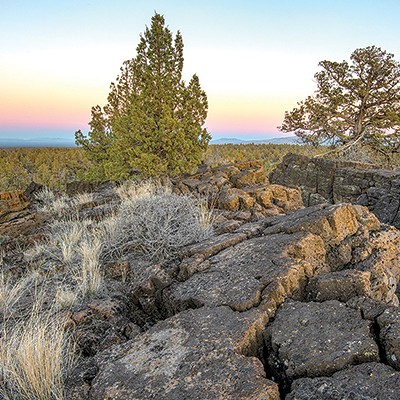ast Thursday was a day I'll long remember. I spent most of of it in Prineville, at Barnes Butte Elementary School with first graders in their classroom and then at the Prineville Wetlands. That may sound like an incongruous combination, but when you consider what the Barnes Butte first grade Badgers were up to, (Monarch butterflies, and the nature of the Prineville community) it's just plain wonderful.
Karen Gentry of Discover Your Forest got things going with a Powerpoint presentation that introduced the children to the biology and habitat need of Monarch butterflies, while Sue Anderson of Monarch Advocates of Central Oregon (also my wife!) used a plywood replica of a Monarch and shared the miraculous story of butterfly metamorphosis. Hands shot up throughout the class, the children telling both personal stories and asking questions about Monarchs.
"I saw three big butterflies last week."
"How many eggs do the butterflies lay?"
"How do the Monarchs stay alive... and why are they dying out?" were just a few of the stories and questions. One girl even shared what she had observed last summer, when she and her family came upon a milkweed patch with Monarch caterpillars.
Both presenters were amazed at the knowledge the children shared with them, and only made the day even better.
The topic of the need for milkweed—as it is the only plant Monarchs lay eggs on, and caterpillars will eat—was a big topic. Before Gentry was done, every student understood their role in helping the nature of the space in which they live be safe for themselves and all kinds of wildlife.
As I was leaving the school to follow the first graders to the Prineville Wetlands, I happened to notice some interesting pictographs drawn on large pieces of brown paper. Fourth grader Athena Weik stopped to tell me about the characters printed on the paper.
hat led me to Weik's teacher, Heather Mattioda, who kindly shared how those pictographs came to be on the bulletin board.
"The pictographs that are displayed in the hallway were part of the study that we did in reference to the natives' form of record. We discuss legends (story-telling of the Native people), petroglyphs (carved pictures usually in rock), and pictographs, a form of drawing or storytelling usually done on animal hides," Mattioda said.
"One of the big connections that we want students to make is how the region impacted the behaviors of the tribes, because, as you may already know, the tribes were greatly impacted by their food sources." I'll be going back to visit with the Barnes Butte fourth graders in the near future to find out more about how the students learn about Native Peoples and their customs.
Everyone at the school was kind and warm. The office staff went out of their way to help me obtain permission to use a photograph of fourth grader Athena Weik. I had never seen such intriguing work in a school before.
After lunch the first graders rolled out to the Prineville Wetlands for the adventure of planting milkweed and wildflower seeds, so necessary to Monarch butterflies.
There again, the warm and friendly manner of the educators and professional members of the Prineville community came to the fore. Eric Klann, the man who put the Prineville Wetlands in operation, welcomed the children and their teachers. (A very good idea on his part, as his wife, Sarah is one of the teachers.)
TWhen the children began planting seeds, the ground around the wetlands began to shudder and shake with the robust jumping of the students.
tweet this
here were also several wetlands volunteers there to help. Longtime volunteer, Jim VanVlack—who has volunteered at several conservation agencies throughout Central Oregon, including the Sunriver Nature Center and Observatory—helped guide everyone to the area the children were going to plant their seeds.
Gary Sanders, project manager for the Crooked River Wetlands Council, was the sparkplug that really got the little Barnes Butte Badgers all prepped up for planting, showing them a mechanical seed planter used to spread vast amounts of seed. He told them they were going to do it themselves...at which they all cheered.
The Crooked River Watershed Council, its partners, employees, and volunteer board members promote stream health, education outreach and upland awareness. Recent projects have focused on riparian restoration, juniper removal and improving fish passage with the expressed goal to improve watershed health.
Sanders then showed the students two orange, five-gallon buckets containing the seeds, a box full of large spoons they would use to scoop up their seeds out of the bucket, and how to distribute the seeds in the area around them.
Then he gave them choices as to how to cover the seeds, letting them either lie down on the ground and wiggle around over the the seeds, or jump up and down on them, which he demonstrated by leaping into the air and stomping the ground under his feet.
There, 104 first graders raptly listened. When Sanders started jumping up and down, they all cheered, shouted and followed Gary's example.
When the children began planting seeds, the ground around the wetlands began to shudder and shake with the robust jumping of the students. U.S. Geological Survey geologists monitoring earthquake sensors may have thought the Big One had gone off in Prineville!



















